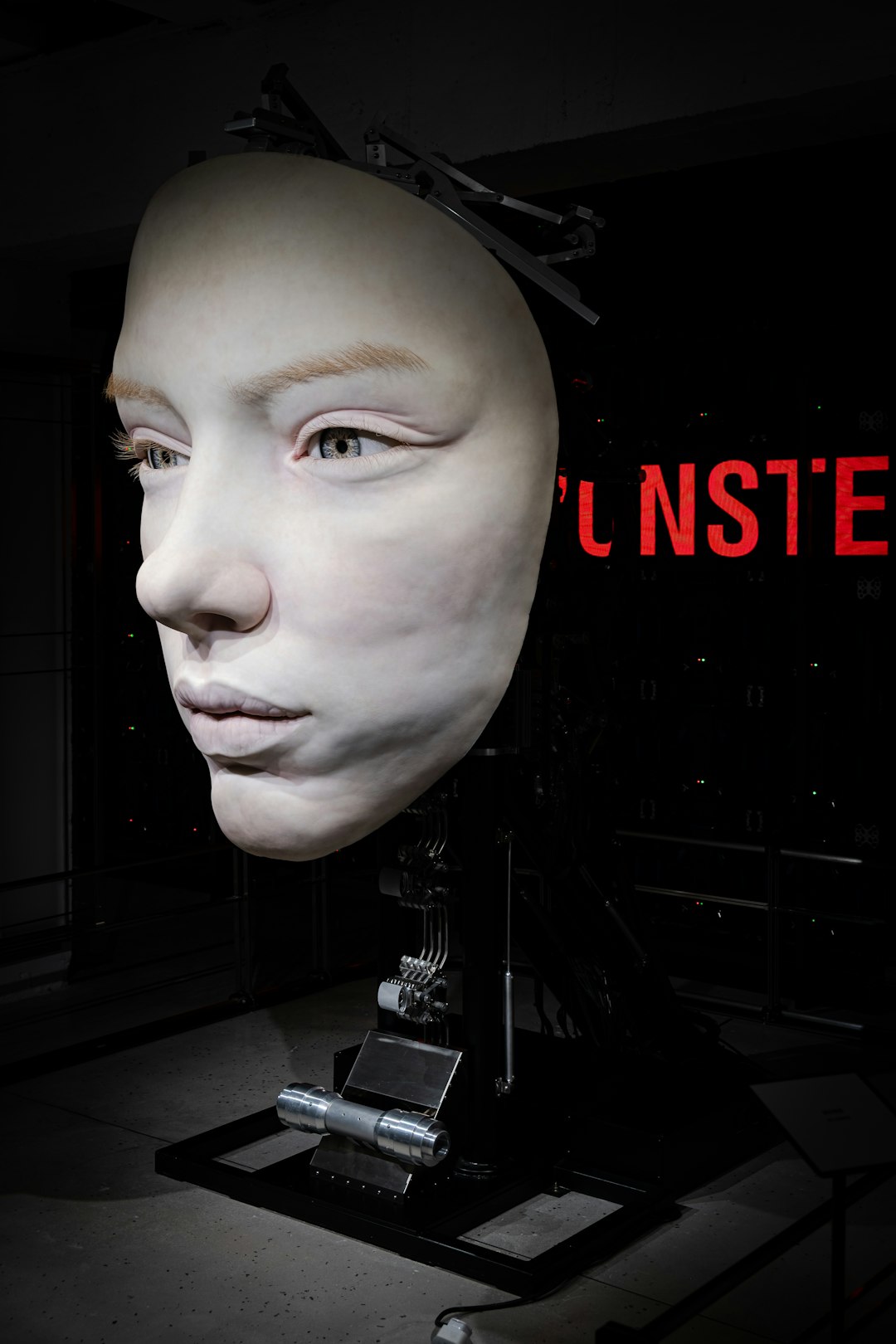Artificial Intelligence (AI) has evolved far beyond simple automation tools or chatbot generators. In the world of cinema, and more interestingly in horror filmmaking, AI is quietly rewriting the rules of storytelling, visual creation, character development, and even viewers’ psychological experiences. With new breakthroughs in generative AI and machine learning, horror movie creators are using these tools to craft smarter, scarier, and far weirder films than ever before.
TLDR (Too Long, Didn’t Read)
AI is revolutionizing horror films by generating complex scripts, unpredictable characters, and disturbing visual elements that tap into deep-seated psychological fears. These tools are helping directors and writers push the boundaries of traditional horror, making films more intelligent and emotionally manipulative. From procedurally generated plot twists to AI-driven camera work, horror storytelling is entering a new era. Expect your next scare to be crafted with surgical precision by a machine.
The Rise of AI in Horror Filmmaking
Hollywood’s embrace of AI is not new, but horror as a genre has uniquely benefited from the technology. Unlike action or romance, horror thrives on unseen forces, abstract fears, and fragmented narratives – elements that AI excels at producing in unexpected and unconventional ways. By leveraging massive datasets, AI tools can detect patterns in what audiences find scary, surprising, or even uncanny, and use those insights to generate content that targets those emotional hot zones.
Modern horror creators are stepping beyond just story generation. They’re utilizing AI in almost every aspect of production:
- Scriptwriting: AI language models trained on decades of horror scripts generate chilling plotlines and dialogue that feel authentic yet bizarre.
- Visual Design: Generative adversarial networks (GANs) create creepy imagery, twisted landscapes, and horrific humanoid forms that bypass human artistic filters.
- Sound Engineering: AI algorithms synthesize unsettling soundscapes and haunting score compositions that mirror human emotional responses.
- Marketing: AI can also target the perfect audience with eerily customized trailers and posters based on viewing habits and psychological profiles.
How AI Makes Horror Smarter
One of the most exciting developments in horror is the emergence of data-informed storytelling. By analyzing the viewer’s terror triggers — including jump scare timing, pacing tension, and character empathy — AI can help filmmakers pinpoint what frightens audiences on a subconscious level. Tools like OpenAI’s GPT models or Google’s DeepMind have been used not only to generate dialogue but also to structure entire scripts that adjust pacing, climactic build-ups, and misdirection techniques with eerie precision.
Moreover, AI can provide psychological consistency throughout the narrative. A villain’s behaviors, if generated through an AI model, can remain unpredictable yet entirely logical within the twisted world they inhabit. This leads to smarter antagonists that defy clichés while still feeling authentic and terrifying. AI is also capable of:
- Analyzing thousands of real-life crime cases or urban legends to build new mythologies.
- Helping characters react in nuanced and increasingly intelligent ways under pressure.
- Maintaining suspenseful ambiguity that traditional linear writing often lacks.
Scarier by Design: Emotionally Tuned Horror
Fear is a deeply personal experience, and AI’s ability to observe and react to emotional cues makes it a powerful tool for creating tailored scares. Through biosignal feedback such as heart rate monitors and facial emotion detection, AI models can understand what scenes shock or disturb an audience the most — and then use that feedback to fine-tune both current and future content. Imagine a horror film that gets progressively scarier based on the audience’s real-time reactions.
This kind of adaptive horror isn’t just science fiction. Some experimental studios are already piloting interactive horror installations that change based on audience fear levels. By tapping into AI’s capacity for real-time emotional understanding, horror films and experiences are evolving into something far more personal, and thus vastly scarier.

Even more traditionally produced films are now enriched by audio-visual elements wholly crafted by AI. Sound effects, ambient noises, and musical cues — such as eerie whispers or stuttering strings — are coded to anticipate and amplify viewer discomfort at just the right moments, often surpassing what human composers might attempt.
Weirder Worlds Through Generative AI
Perhaps the most visually transformative effect of AI in horror is its ability to design dreamlike, or more accurately, nightmarish worlds. Generative art platforms like MidJourney and Stable Diffusion allow filmmakers to conjure infernal creations and surreal vistas that escape traditional logic – perfect for cosmic horror, body horror, or psychological horror themes.
These AI-designed visuals tend to lean into the disturbing “uncanny valley,” generating faces that look almost human but with just enough deviation to be unsettling. Entities with too many eyes, hallways that extend forever, or flickering lights that defy physics — these images often spark a primal discomfort that might elude even the most talented concept artists.

Additionally, the randomness introduced by generative models helps break away from the overused tropes or remakes that currently saturate horror. By feeding obscure literature, folklore, and forgotten film scripts into the AI training corpus, creators can “resurrect” dead genres or create entirely new sub-genres of horror that feel fresh and alien. Think of AI as an eldritch collaborator — exposing us to fears our conscious mind couldn’t articulate but instinctively recoils from.
Challenges and Ethical Questions
However, injecting AI into horror cinema isn’t without its challenges. Ethical questions loom large:
- Who owns the AI-generated content? If a model is trained on thousands of copyrighted scripts or artworks, are its outputs original?
- Can AI-generated horror desensitize viewers more rapidly? There’s concern that hyper-targeted content might accelerate emotional burnout or detach audiences from traditional narrative experiences.
- Will human creativity suffer? Some critics worry that over-relying on AI could lead to formulaic or emotionally hollow horror if not carefully managed.
Despite these issues, most industry experts see AI not as a replacement but as a tool — one that frees human creators from tedious tasks and opens portals to more sophisticated, emotionally varied work. The goal is not to make horror robotic, but to make it more terrifyingly human, by modeling behavior and emotion to enhance realism rather than reduce it.
Looking Ahead: The Future of AI in Horror
As AI technologies continue to evolve and integrate across every stage of film production, we are likely to see a new breed of horror cinematography. Future horror films may come with built-in interactivity, multi-ending capabilities, or even real-time user customization depending on the viewer’s emotional responses. Imagine choosing whether your character hides or fights — and the AI recalculates the horror trajectory accordingly.
We may also see the rise of entirely AI-generated films, developed start to finish by machine intelligence under human supervision. These could function as experimental horror, challenging notions of authorship and artistic identity.
Conclusion
AI horror generators are not just making movies. They are crafting experiences that engage our psychology, challenge our expectations, and expose our deepest fears with scientific intensity. From fractured narratives and surreal worlds to intelligent monsters and adaptive soundscapes, the horror genre is on the cusp of a terrifying renaissance.
And in this chilling theater of the future, the scariest part might not be what AI creates — but how well it understands us.